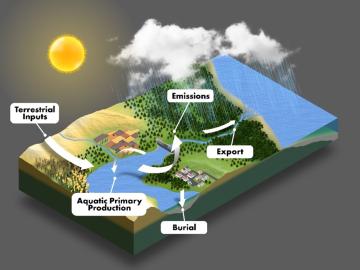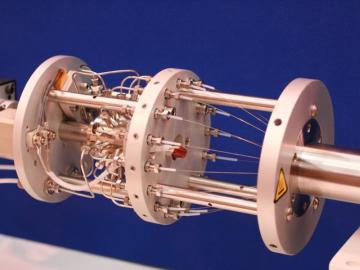
Filter News
Area of Research
- Biology and Environment (32)
- Biology and Soft Matter (1)
- Computer Science (1)
- Electricity and Smart Grid (1)
- Energy Science (28)
- Functional Materials for Energy (1)
- Fusion and Fission (4)
- Isotopes (2)
- Materials (22)
- Materials for Computing (4)
- National Security (12)
- Neutron Science (4)
- Supercomputing (23)
News Topics
- (-) Computer Science (26)
- (-) Environment (40)
- (-) Grid (13)
- (-) Isotopes (4)
- (-) Machine Learning (10)
- (-) Materials Science (18)
- (-) Nanotechnology (9)
- (-) Quantum Science (9)
- (-) Space Exploration (4)
- (-) Transportation (12)
- 3-D Printing/Advanced Manufacturing (13)
- Advanced Reactors (4)
- Artificial Intelligence (15)
- Big Data (11)
- Bioenergy (21)
- Biology (30)
- Biomedical (6)
- Biotechnology (3)
- Buildings (16)
- Chemical Sciences (15)
- Clean Water (5)
- Composites (4)
- Coronavirus (9)
- Critical Materials (4)
- Cybersecurity (9)
- Element Discovery (1)
- Energy Storage (26)
- Exascale Computing (9)
- Fossil Energy (1)
- Frontier (10)
- Fusion (8)
- High-Performance Computing (16)
- Hydropower (8)
- Irradiation (1)
- ITER (2)
- Materials (37)
- Mercury (2)
- Microscopy (14)
- National Security (17)
- Neutron Science (15)
- Nuclear Energy (10)
- Partnerships (8)
- Physics (12)
- Polymers (5)
- Quantum Computing (7)
- Security (4)
- Simulation (6)
- Summit (7)
Media Contacts

Researchers in the geothermal energy industry are joining forces with fusion experts at ORNL to repurpose gyrotron technology, a tool used in fusion. Gyrotrons produce high-powered microwaves to heat up fusion plasmas.

Global carbon emissions from inland waters such as lakes, rivers, streams and ponds are being undercounted by about 13% and will likely continue to rise given climate events and land use changes, ORNL scientists found.

Researchers at ORNL explored radium’s chemistry to advance cancer treatments using ionizing radiation.

A multi-lab research team led by ORNL's Paul Kent is developing a computer application called QMCPACK to enable precise and reliable predictions of the fundamental properties of materials critical in energy research.

Researchers from ORNL, the University of Tennessee at Chattanooga and Tuskegee University used mathematics to predict which areas of the SARS-CoV-2 spike protein are most likely to mutate.

When Bill Partridge started working with industry partner Cummins in 1997, he was a postdoctoral researcher specializing in applied optical diagnostics and new to Oak Ridge National Laboratory.

ORNL has been selected to lead an Energy Frontier Research Center, or EFRC, focused on polymer electrolytes for next-generation energy storage devices such as fuel cells and solid-state electric vehicle batteries.

Five technologies invented by scientists at the Department of Energy’s Oak Ridge National Laboratory have been selected for targeted investment through ORNL’s Technology Innovation Program.

Five National Quantum Information Science Research Centers are leveraging the behavior of nature at the smallest scales to develop technologies for science’s most complex problems.

Researchers at the Department of Energy’s Oak Ridge National Laboratory and their technologies have received seven 2022 R&D 100 Awards, plus special recognition for a battery-related green technology product.


